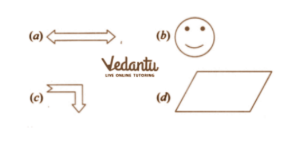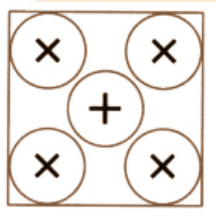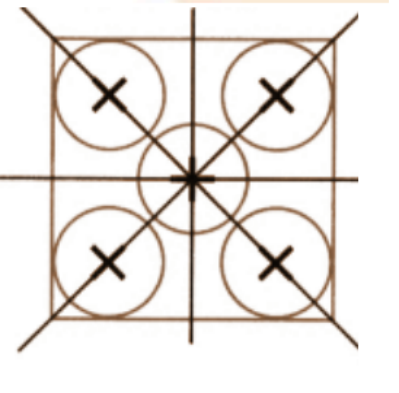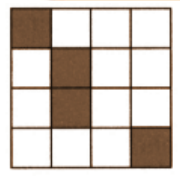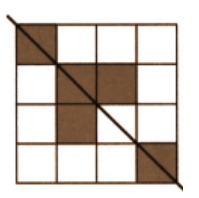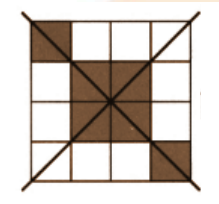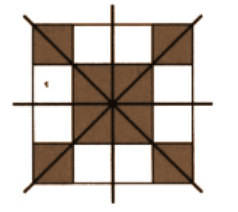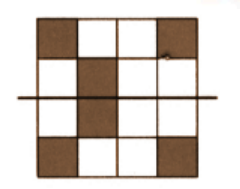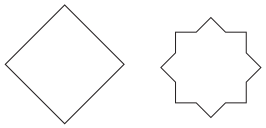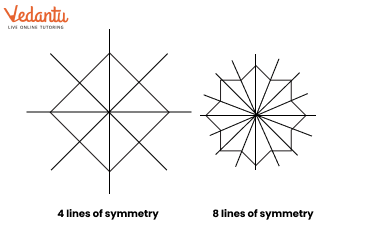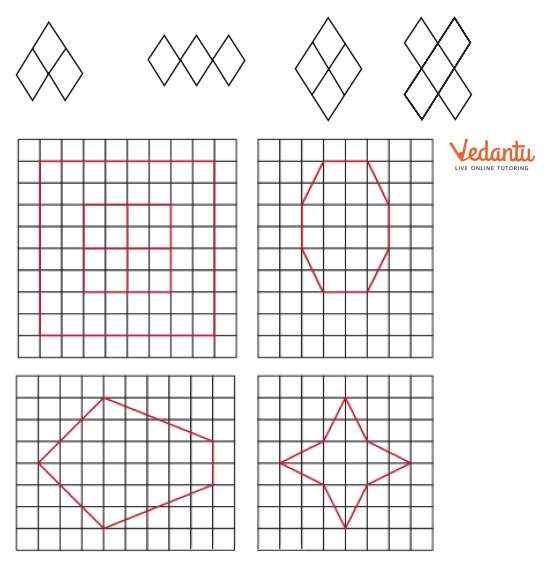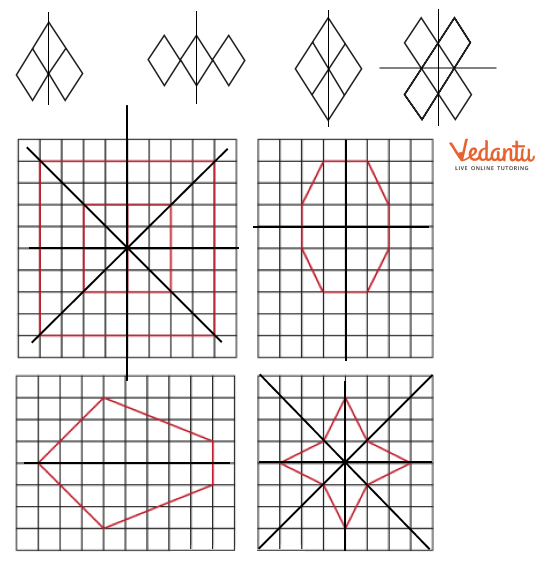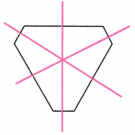CBSE Important Questions for Class 6 Maths Symmetry - 2025-26
FAQs on CBSE Important Questions for Class 6 Maths Symmetry - 2025-26
1. What are the most frequently asked types of questions from CBSE Class 6 Maths Chapter 9, Symmetry, for the 2025-26 exams?
For the 2025-26 exams, students should focus on these important question types from Symmetry:
- Identifying lines of symmetry: Questions asking to find and draw all possible lines of symmetry for given shapes like triangles, squares, and alphabets.
- Completing symmetrical figures: You will be given half a figure along a line of symmetry and asked to draw the other half.
- Checking for symmetry: Determining if a given shape is symmetrical or not.
- Conceptual questions: Questions about shapes with a specific number of symmetry lines (e.g., a shape with exactly one line of symmetry).
2. How can I score full marks on questions asking to find lines of symmetry in geometrical figures?
To score full marks, ensure you identify all possible lines of symmetry. A good method is to imagine folding the shape along a line. If one half perfectly covers the other, that line is a line of symmetry. For regular polygons, the number of sides equals the number of lines of symmetry. For letters, carefully check for both horizontal and vertical symmetry.
3. Which capital letters of the English alphabet are important examples of symmetry for exam questions?
For exam purposes, it's important to know the symmetry of various letters. Key examples include:
- Vertical line of symmetry: A, H, I, M, O, T, U, V, W, X, Y
- Horizontal line of symmetry: B, C, D, E, H, I, K, O, X
- Both horizontal and vertical symmetry: H, I, O, X
- No lines of symmetry: F, G, J, L, N, P, Q, R, S, Z
4. Why does a circle have infinite lines of symmetry? Is this an important concept?
Yes, this is a very important concept. A circle has infinite lines of symmetry because any line that passes through its centre will divide the circle into two identical semicircles. Since you can draw an infinite number of such lines through the centre, a circle is considered to have an infinite number of symmetry lines. This is a common question to test conceptual understanding.
5. What is a common mistake students make in Symmetry questions, and how can I avoid it?
A common mistake is confusing the diagonals with lines of symmetry in all quadrilaterals. While diagonals are lines of symmetry for a square and a rhombus, they are not lines of symmetry for a rectangle or a general parallelogram. Always use the 'folding test' mentally to confirm if a line, including a diagonal, truly creates two mirror-image halves.
6. How is the concept of reflection used in Symmetry?
Reflection and symmetry are directly related. A line of symmetry can be thought of as a 'mirror line'. Every point on one side of the symmetrical figure has a corresponding point on the other side at the same perpendicular distance from the line. The entire shape is a combination of one half and its reflection across the line of symmetry.
7. Can a triangle have exactly two lines of symmetry? Why is this a tricky question?
No, a triangle cannot have exactly two lines of symmetry. This is a higher-order thinking (HOTS) question. Here's why:
- A triangle with one line of symmetry is an isosceles triangle.
- A triangle with three lines of symmetry is an equilateral triangle.
- If a triangle were to have two lines of symmetry, it would imply that two pairs of sides and angles are equal, which forces the third pair to also be equal, making it an equilateral triangle. Therefore, it would automatically have a third line of symmetry.
8. What is the difference between the lines of symmetry in a rectangle and a square?
This is a key comparison question. A rectangle has two lines of symmetry which are the lines joining the mid-points of its opposite sides. A square, being a special rectangle, has these two lines plus two more lines of symmetry along its diagonals, making a total of four.
9. From an exam perspective, what are some real-world examples of symmetry that I should know?
Knowing real-world examples helps in application-based questions. For the exam, remember examples from:
- Nature: Butterflies, flowers, leaves, snowflakes.
- Architecture: Building facades, monuments like the Taj Mahal.
- Human-made objects: Car wheels, kites, designs, and patterns.
























